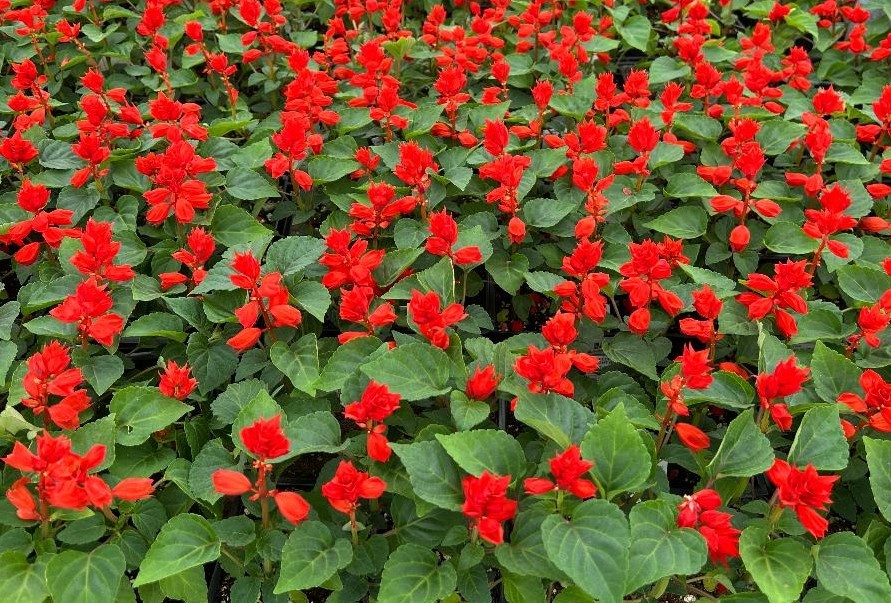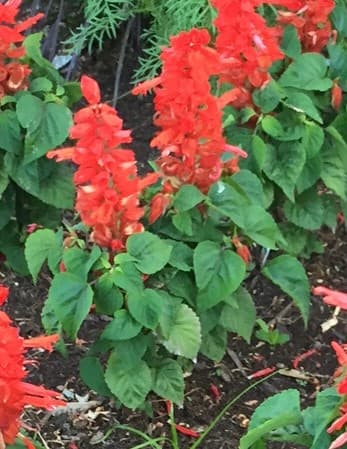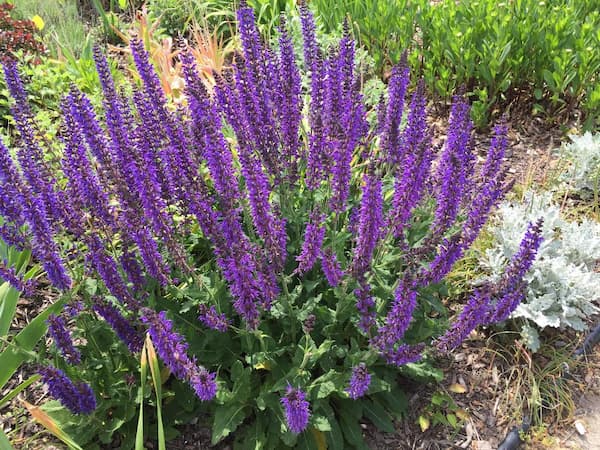How to Grow and Care for Salvia Flowers

About Growing Salvia Plants in Your Home Flower Garden
If you are looking for variety, growing salvia plants is for you. flower. There are over 700 species of this plant that originated in warm and temperate climates. There are annual and perennial varieties aplenty. Spiky Salvia flowers are borne on bushy plants. You most likely know, and readily recognize, the bright red and scarlet Salvia. But, the flowers are also found in most other colors, including blue.
Did you know? Sage is salvia. It is classified as a herb and a flower.
Salvia makes nice bouquets fresh or dried for winter use.
Flowers Bloom: Late spring to early Summer.
Flower Colors: Shades of blue, orange, purple, and yellow.
Plant height: Plant size generally ranges from 10 to 60 inches. But, most varieties below 36″.
Plant Hardiness Zones: 3 – 8
Annual and Perennial

Salvia Plant Propagation
Salvia plants are often grown from seeds. They can be directly seeded into your flower garden or seeded indoors for transplanting later.
Some varieties require light to germinate, and the seed should be spread on the top of the soil. Water lightly as the fine seeds can wash away or penetrate too deeply into the soil.
For indoor starts, sow seed 8 – 10 weeks before the last frost in your area.
Note: For indoor starts, we recommend using a heated germination mat, to increase the speed of germination. And, it, results in a higher germination rate.
Transplant Salvia into your garden after the last frost date for your area.
Final Plant Spacing: Space them 10 – 20 inches apart, depending upon species. Give them plenty of room to grow and show off their bright blooms.
For perennial varieties, salvia plants can also be propagated by division, which is best done in the spring.
Days to Germination: 15 – 21 days.

How to Grow Salvia Flower Plants
Salvia plants grow best in full sun. They grow well in average or better soil, but the soil should drain well. Add a general-purpose fertilizer when planting them, then once a month after that.
Keep the soil moist to slightly dry. Water them during dry periods, once or twice per week.
Keep them well weeded and apply a 2-3 inch layer of mulch for a tidy appearance.
Once your Salvia plants are established, they should grow well with few problems.
Many Salvia varieties are heavy re-seeders. Place them in an area where you want them to re-seed and return each year.
Ideal Soil pH: 6.0 – 7.5.
Also, see:
Plant Problems – Identify the causes and find the cures.
Insects and Plant Disease
Insect and disease problems are not too common. If insect infestations or disease problems occur, treat early with fungicide.
Related Articles
Also, people who read this article will like:
How to Grow Salvia Plants – by Garden Hobbies
Please support our site. Shop for:
- rmmatthews100@hotmail.com
- 585-721-6528
- Rochester, NY
©1999-2024 GardenersNet.Com, All Rights Reserved

